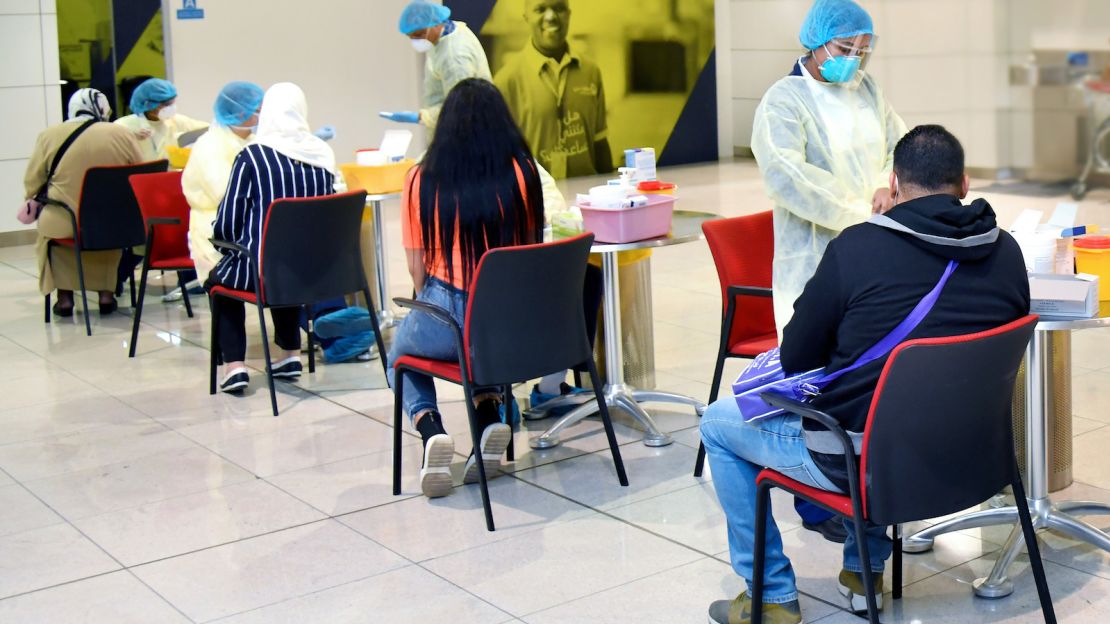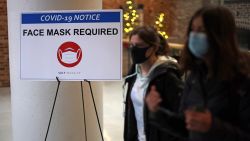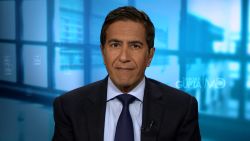Socrates Gavriel is bracing for a dramatic drop in visitors to his boutique hotel in Athens this summer.
Located a short distance from the Greek capital’s commercial center, Pi Athens ordinarily welcomes droves of American and Australian tourists this time of year.
“The concern this summer is that those who will come — if and when they do — will skip the big cities and head directly to a beach location,” Gavriel told CNN Business. “The hotel is a rented property and there are many bills to pay. I have invested in it heavily. We are hoping for some revenue in the summer but we don’t know if this is going to happen.”
Gavriel’s story is playing out across the globe, as government restrictions designed to curb the coronavirus pandemic keep billions of people at home, bringing international travel and tourism to a standstill. The shutdown is affecting everything from small businesses like Gavriel’s to massive companies, such as Marriott International (MAR) and Carnival Corporation (CCL). TUI, the world’s biggest tour operator, said Wednesday that it could shed up to 8,000 jobs.
Even some of the biggest global airlines, such as Germany’s Lufthansa (DLAKF), are seeking government bailouts in order to survive.
Travel and tourism accounts for some 10% of global GDP and one in 10 jobs, according to the World Travel and Tourism Council, an industry group. As many as a third of these jobs, or more than 100 million positions, and some $2.7 trillion in GDP could be at risk as a result of the current crisis, the council said last month.
Countries that rely most heavily on tourist dollars will be hardest hit. A 25% decline in tourism income will knock on average 7% off GDP among “small island developing states,” a contraction that could go as deep as 16% in places such as the Maldives and Seychelles, according to the United Nations Conference on Trade and Development.
The situation is also dire in Europe, which boasts half the world’s international tourist arrivals. The European Parliament estimates that the bloc’s tourism industry is losing around €1 billion ($1.1 billion) in revenue per month, a devastating blow to the 27 million EU workers whose jobs are connected to the sector.
“The crisis in the tourism sector is deeper than we could imagine two months ago,” said Isabel Oliver, Spain’s secretary of state for tourism. “The sector was one of the first to suffer the consequences of the crisis and will be one of the last to recover,” she added.
While hotel owners such as Gavriel desperately need international visitors, reopening borders risks a surge in new coronavirus infections even if it could mean economic relief. Greece hopes to start welcoming tourists by July 1, but Prime Minister Kyriakos Mitsotakis admits that “it’s a very tough trade off.”
“Nobody knows exactly how to do this,” he told CNN in an interview earlier this month.
Kickstarting tourism, while crucial for the global economy, will be especially complex. Reopening businesses and restarting factories is proving hard enough, but the return of travel will require an easing of border controls, international cooperation and, most crucially, travelers themselves.
The European Commission on Wednesday unveiled a package of guidelines aimed at helping EU countries revive tourism, but it acknowledged that travel will not be risk free as long as the virus continues to circulate.
It proposed lifting travel restrictions between countries where outbreaks are contained, encouraged the use of contact tracing apps, and recommended a new voucher system to protect travel operators from exposure to widespread cancellations.

“The critical issue is to build confidence between countries that it is safe to reopen borders without risk of reinfection and to build confidence in the general public that it is safe to fly,” John Holland-Kaye, CEO of London’s Heathrow, the busiest airport in Europe, said last month.
Airports hold the key
But airlines are already downsizing, trimming fleets and slashing thousands of jobs, in expectation that people will fly less. British Airways parent IAG said last week that it does not expect passenger demand to recover to 2019 levels before 2023. Princess Cruises, a division of Carnival Corporation, has canceled virtually all its summer sailings, citing limited flight availability and the closure of many popular cruise ports. And rival cruise line Norwegian has had to raise more than $2 billion in the capital markets to stay afloat.
Airports and hotels are trying to lure travelers back with health checks and enhanced cleaning protocols, all of which will add layers of cost at a time when the sector’s finances are in tatters because of the collapse in travel.
But such measures are necessary to restore confidence before a Covid-19 vaccine is widely available, said World Travel and Tourism Council CEO Gloria Guevara. “The most critical piece is the airports,” she told CNN Business.

The World Travel and Tourism Council is working with governments and travel organizations to agree on standardized health checks and cleaning protocols. It expects to issue guidelines for the hospitality industry this week with guidance for airports to follow.
Ryanair (RYAAY), which carries millions of tourists around Europe each year, on Tuesday announced new health measures to be implemented on board aircraft as part of plans to restore 40% of flights starting on July 1. The measures illustrate the daunting task facing airlines as they seek to resume flying.
“A quick and effective restart of travel will only happen if governments around the world agree to a common set of health protocols developed by the private sector,” Guevara said in a statement.
Even if that does happen, international tourist arrivals are predicted to be virtually nonexistent this year.
The United Nations World Tourism Organization estimates a decline of as much as 80% from 2019, depending on how long travel restrictions remain in place. That compares with a 0.4% decline during the SARS epidemic in 2003 and a 4% drop in 2009 following the global financial crisis.
“This is by far the worst crisis that international tourism has faced since records began [in 1950],” the UN body said in a statement last week. “The impact will be felt to varying degrees in the different global regions and at overlapping times, with Asia and the Pacific expected to rebound first.”
Domestic travel offers glimmer of hope
There are some early signs that domestic travel is gradually picking up again in certain countries, although it’s too soon to call a recovery.
China began to ease coronavirus lockdown restrictions in March, after the country’s near complete shutdown in late January. More than 30% of domestic airline capacity has returned since March 1, according to aviation analytics company, Cirium.
“Green shoots in the Chinese domestic market … is a positive sign for short-haul travel recovery,” the company said in a research note. “It’s clear that, as some travel restrictions ease, it will be the domestic market which will start to return first.”
But flight cancellations remain elevated and the recovery has plateaued, suggesting consumer confidence has not yet been fully restored, Cirium added.
Marriott said Monday that occupancy at its hotels in Greater China reached 25% in April, up from less than 10% in mid February. Meituan Dianping, an app that allows consumers to shop, order food and book trips, recorded increased spending on local tourist attractions, and a pickup in hotel and bed and breakfast bookings last month.

However, some tourist attractions in China were forced to shut shortly after reopening due to an influx of visitors. The country is now renewing restrictions in some areas after new cases of the virus were reported in two cities, including the pandemic’s epicenter Wuhan.
Elsewhere, Airbnb has observed a surge in domestic bookings in Denmark and the Netherlands, CEO Brian Chesky told the Financial Times recently. “People will want options that are closer to home, safer, and more affordable,” Chesky said in a letter to staff posted to the company’s website.
But that doesn’t mean a full recovery will be achieved anytime soon, and China’s experience could cause other countries to reopen with even greater caution. The International Air Transport Association said Wednesday that it does not expect average trip distances to recover to 2019 levels for at least the next five years.
With “staycations” expected to spearhead the sector’s eventual revival, countries that rely more heavily on domestic and regional visitors will fare better.
At the top of this list are the United States, Mexico, Brazil, China, Japan, India, the Philippines, Germany and the United Kingdom, where domestic tourism accounts for more than 80% of total travel and tourism spending, according to the World Travel and Tourism Council.
Asia Pacific has the largest regional travel market, which bodes well for some islands, such as the Maldives and Fiji, assuming tourists choose destinations that are closer to home. Countries such as Thailand and Cambodia, which both derive more than 20% of their GDP from travel and tourism, could also benefit. Visitors from Asia accounted for nearly 70% of all tourist arrivals in Thailand in 2018, according to Bangkok Bank.
Chinese tourists spend most on world travel, accounting for one fifth of international tourism spending in 2018, or $277 billion, according to the World Tourism Organization. Tourists from the United States follow at $144 billion.
With journeys to international destinations expected to recover last, small business owners like Gavriel, whose patrons travel long distances to come to Greece, face an uncertain future.
— Elinda Labropoulou, Nic Robertson, Laura Perez Maestro and Sherisse Pham contributed reporting.






















